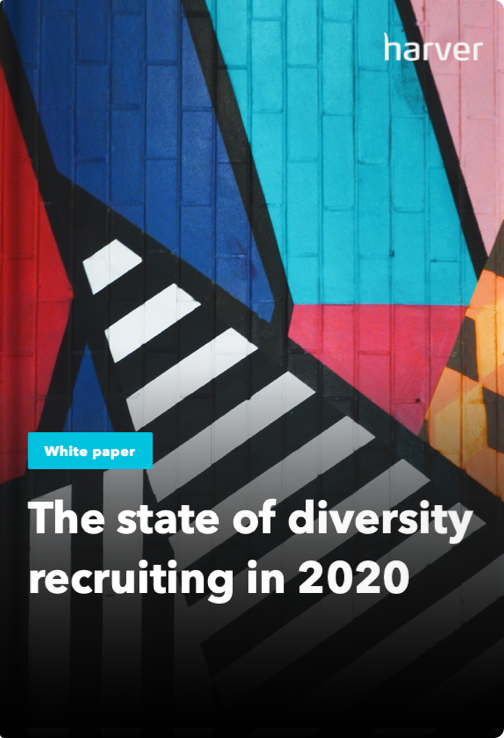Inclusivity is such a hot topic and it shows no signs of abating, for good reason. According to Deloitte, inclusive workplaces are 6X more likely to be innovative and 2X more likely to meet or surpass financial goals.
Research by HBR showed that employees who work in an inclusive culture are 42% less likely to leave within a year. And a study by McKinsey & Co showed that companies in the top quartile for gender diversity on their exec teams are 27% more likely to create superior value.
But what does it mean to be inclusive? For some companies, it simply means hiring a diverse workforce. For others it manifests as monthly meetings for unconscious bias training. For 60% of Fortune 500 companies, says the Wall Street Journal, it means having a Chief Diversity Officer.
Before we delve into the best practices for building an inclusive culture, let’s first dive further into what it actually means to be an inclusive workforce, and examine the characteristics of an inclusive workplace.
What’s in?
What are the characteristics of an inclusive workplace?
Inclusion isn’t one thing: it isn’t whether you’re invited to lunch with colleagues or your manager approves your flexible working request. Plus, measuring inclusion is incredibly difficult because it’s so subjective.
Essentially, an all-round view of an inclusive workplace is somewhere that everyone feels they belong, that they matter, that there’s a community, a connection with the other employees. Because that’s what inclusivity is – it’s a connection to the people you work with in the place where you work, allowing you the freedom to bring your whole self to work.
The foundations of an inclusive workplace include:
- Having a voice. Employees feel like they aren’t just a number on payroll, that they have a say and they believe their opinion is valued. They aren’t just resources for the company to use and abuse.
- A sense of belonging. Employees feel that they can bring their whole self to work and that they are a part of the fabric of the organization, they’re connected to the company, they aren’t just another employee.
- Appreciating uniqueness. Employees feel that they aren’t lumped in with their peers, that their individuality is celebrated and valued, and their diversity and experience are considered a strength.
- Being valued. Employees feel like their work is appreciated, that their uniqueness is valued, that they’re valued as individuals.
- Collaboration. A workplace that is structured so that employees don’t work in silos, barriers are broken down and employees, company-wide – across departments and at all levels – work together in unison, all pulling towards the same overall goals.
- Commitment to diversity. An organization that actively seeks out diversity through HR and recruitment drives, encouraging it at every level: from C-suite to entry-level employee.
- Equality. A workplace that values diversity, where equality is equal to diversity and all employees are treated equally.
The state of diversity recruiting in 2020
How to build an inclusive culture in your workplace
Measure your DEI efforts
How do you know if you’re hitting your inclusion goals if you’re not measuring your efforts? Benchmark where you are before you start:
- Carry out a full audit of all your people related processes: from sourcing candidates to your recruitment process, onboarding, exit interviews, development practices, retention schemes. Use this data alongside your employee engagement data and any other form of survey or feedback you gather, to get a full understanding of where the company is in terms of inclusivity now.
- Then establish your inclusion goals. Your inclusivity goals should be specific, measurable and timely, just like any of your other business goals.
- Create data driven inclusion strategies to reach these goals.
- Clearly communicate your goals and strategies company wide.
We’ve explored the topic in the articles below.
Tune into empathy
Inclusivity and diversity can get lumped together as a single initiative, but for real inclusion, change to happen, everyone from the top-down, needs to buy into the value of belonging.
Inclusivity isn’t the problem of a select few minorities, it’s something we’ve all experienced at some time or another. We’ve all been excluded, felt shamed, and been interrupted when we spoke.
Tune into those feelings, identify what it felt like, and let that be a starting point to building an inclusive culture so that no one else has to go through it.
Educate leadership
Inclusivity starts at the top. So make sure your C-suite and managers are fully up to speed with your D&I efforts. They lead from the front and inclusivity should trickle down behind them.
Don’t assume that your leaders understand what it means to be inclusive, take the initiative and educate them. Provide mandatory training for everyone, CEO included.
Start with the basics – explain what inclusivity is and why it’s so important for your organization, then have them figure out strategies to implement and foster an inclusive culture within your company.
- At Amex, for example, they provide mandatory inclusivity training for everyone vice president and up.
- At Merck & Co, every manager has mandatory unconscious bias training.
Ensure leadership is aware of the importance of modelling inclusive behaviour. Hold leaders accountable for their commitment to inclusivity – all employees need to understand that inclusive behaviour is a core characteristic.
Like what you see?
Don’t miss out. Subscribe to our monthly digest to get the latest TA and TM resources delivered right to your inbox.
Create an inclusion team
Consider creating a dedicated team of influential, diverse leaders who are passionate about and committed to ensuring inclusivity in the workplace.
These people need to be relatively high up in the org chart. It doesn’t need to include the CEO, but they do need to represent your workforce, not just in terms of gender and ethnicity, but across your different business functions, even geographic locations if you have more than one.
If you don’t have diversity in your C-suite to create this inclusion team, let that be the first place you begin focusing your inclusion efforts.
They are going to be the communication channel between your employees and the leadership. Include your inclusion team when goal setting, even for advancing your diverse workforce. They should meet often to address any problems, and review feedback, share issues and relay messages up and down the chain as appropriate.
Note – an inclusion team isn’t an employee resource group or a business resource group. While these groups are a great D&I tool, providing valuable insight into early issues, the responsibility for inclusivity doesn’t lie with the underrepresented, more diverse members of your organization. You need a high ranking inclusion team to ensure these issues are fed right up the chain.
Celebrate diversity
Do you want your employees to feel valued at work? To feel safe bringing their whole self to work? Then celebrate their differences, respect their cultural backgrounds and educate yourself about their particular traditions.
Invite employees to celebrate festivals with their teammates. Set aside a dedicated mediation room for employees who value space for reflection. Diversity may yield better business results, but inclusivity is what makes diverse employees stay at your organization and deliver.

Research by HBR showed that employees who work in inclusive cultures are
42%
less likely to leave within a year.
Source: HBR
Learn to listen
There is no better skill to help you understand your employees better than listening. From regular one on ones with every employee, to carrying out employee surveys, to convening focus groups specifically to dig down into inclusivity issues.
Learning to listen to what your employees are saying, will enable you to provide a more inclusive workplace and help you develop strategies to reach your inclusivity goals.
Have effective meetings
Nothing demonstrates a company’s culture quite like the daily interactions with colleagues. And meetings are one of the most common places where we’re likely to have interactions with fellow employees.
To make sure you have the most effective meetings, take a leaf out of Jeff Bezos’ book for meeting rules:
- Start the meeting with silence. Everyone reads the memo that has been prepared for the meeting so everyone goes into the meeting equally informed. Only when everyone has read the information does the discussion open up.
- No power point.
- Two pizza teams. If you can’t feed the entire meeting with two pizzas, you’ve got too many people attending the meeting. If a meeting is too crowded, it makes it difficult for quiet people to be heard, introverts won’t want to raise their voice, and dominant personalities will take over.
Empower employees
Inclusivity must start at the top, but if you want employees to live and breathe inclusivity in their daily work lives, make it easy for them.
From top down approaches, to bottom up, and middle out, ensure you find a way to empower employees at every level of your organization, and put in place a system to support them, no matter where they are in the org chart:
- Resources. Provide resources that support employees in their quest to be more inclusive. From technology that enables employees to do their job properly, to establishing an employee resource group. Then make sure that every employee has access to and knows about your inclusivity resources and where to find them.
- Voice. Give employees a say in decisions which directly impact their work. Provide a forum for them to voice their issues either formally: through regular one to ones with managers, in team meetings, or through a dedicated inclusion team; or informally: hold focus groups, send out quarterly or monthly employee engagement surveys, conduct weekly pulse surveys, install an employee suggestion box.
- Individuality. Have intentional conversations, one to one, with employees. Recognize their individual contribution, explain why they’re valued and what it is about their work that is so great. Acknowledge their individual achievements and celebrate their successes.
- Development. Provide employees the opportunity to develop and advance their careers through learning, formal education and training. These are key components of inclusion, without them, you’ll stymie an employee’s individual growth and ability to innovate.
Next steps
Inclusivity needs to be built into every aspect of your organization – from candidate sourcing, to onboarding, to daily work life, team work, performance reviews, succession planning, and mentoring.
Constantly ask yourself: have we created a workplace where every employee can bring their whole self to work and contribute in their own unique way, and feel safe, secure, connected and valued while they do their work?
Creating an inclusive culture doesn’t have an end point. It’s a constantly evolving process that requires time, effort and persistence. The benchmarks are always moving, so your goals and tactics to build the most inclusive workplace have to keep changing too, if you hope to meet the needs of your current employees and your potential future employees too.


